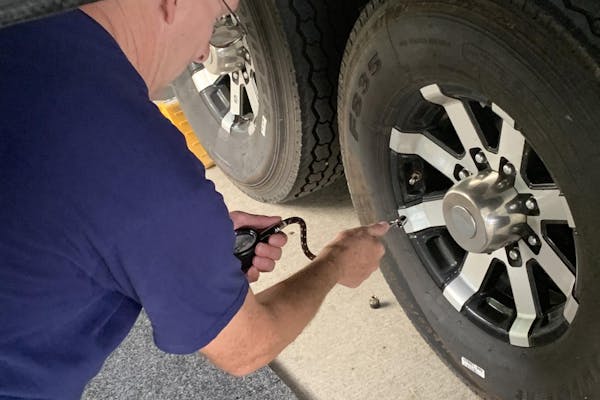RVs are built for adventure and can be the ultimate companions when it comes to making some amazing memories, but nothing can ruin a dream trip faster than maintenance trouble. Making preventable maintenance a top priority can help avoid major issues down the line and keep your RV running smoother and longer.
Dustin and I like to tackle maintenance on our Tiffin Wayfarer Class C based on trip length and how long our RV has been in storage. This gives us the opportunity to find any potential issues before they become major, costly problems. And while this is just a short list of the maintenance that a typical motorized RV requires, we always recommend consulting with a dealer to ensure all of your specific features are covered.
Disclaimer: Make sure you know how to safely use all of the tools mentioned below. Every RV is unique and will require different safety checks and maintenance. If you need help, please be sure to consult a professional.









